Getting Started: First Steps in Lobster
Say hello to Lobster. With Lobster your team saves valuable time and resources and can focus on the work that truly matters. But first, let’s get you started.
Login
Lobster uses Single sign-on (SSO) authentication. This means that you log in with the same ID that you use in your organisation’s tools such as Microsoft Teams or Google Workspace. After your first login, your organisation’s Lobster admin will approve you to access Lobster.
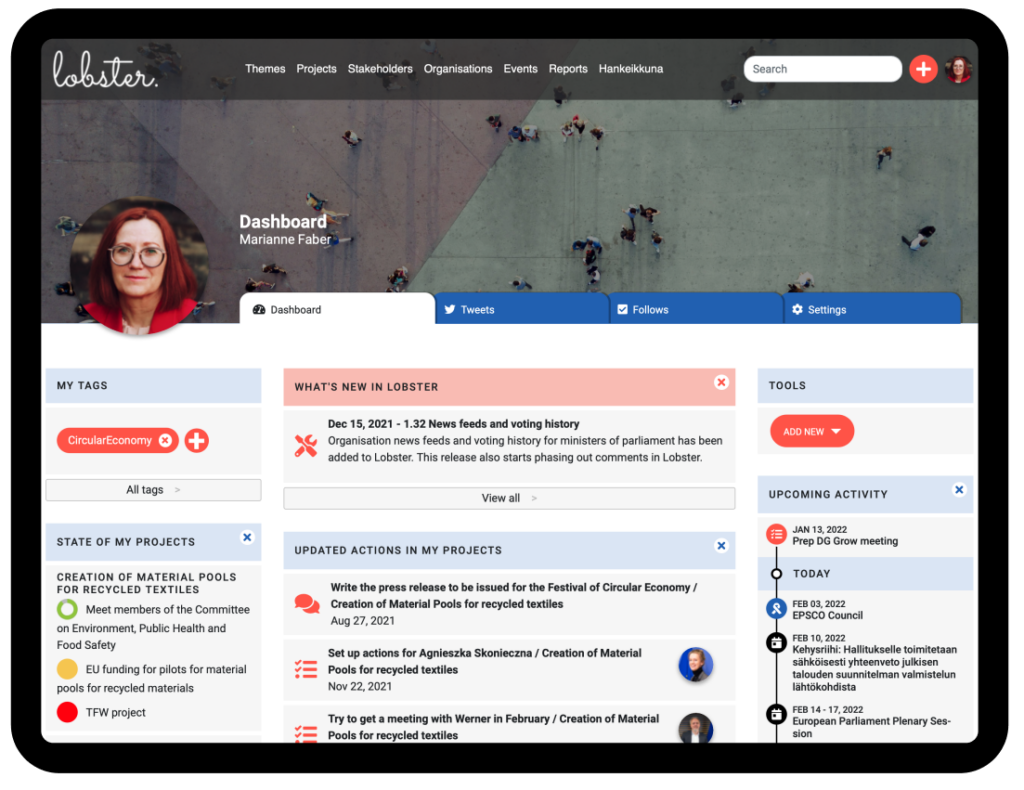
Once your account is approved, just log in again. This will take you to your Lobster Dashboard, which is a summary of all the Lobster activities relevant to you.
Update Your Profile
Access your profile by clicking your name on the Lobster Dashboard or profile icon at the top right-hand corner. Add your profile picture and your title. To update any other information, such as your contact info or social media accounts, just click the Edit on the Basic Info.
Note that your profile information is visible only to your colleagues in your organisation’s Lobster.
Add Your Stakeholder Connections
Connections are important in lobbying. When all team members add their stakeholder connections to Lobster, you will be able to see who can help you reach a stakeholder you need to talk to.
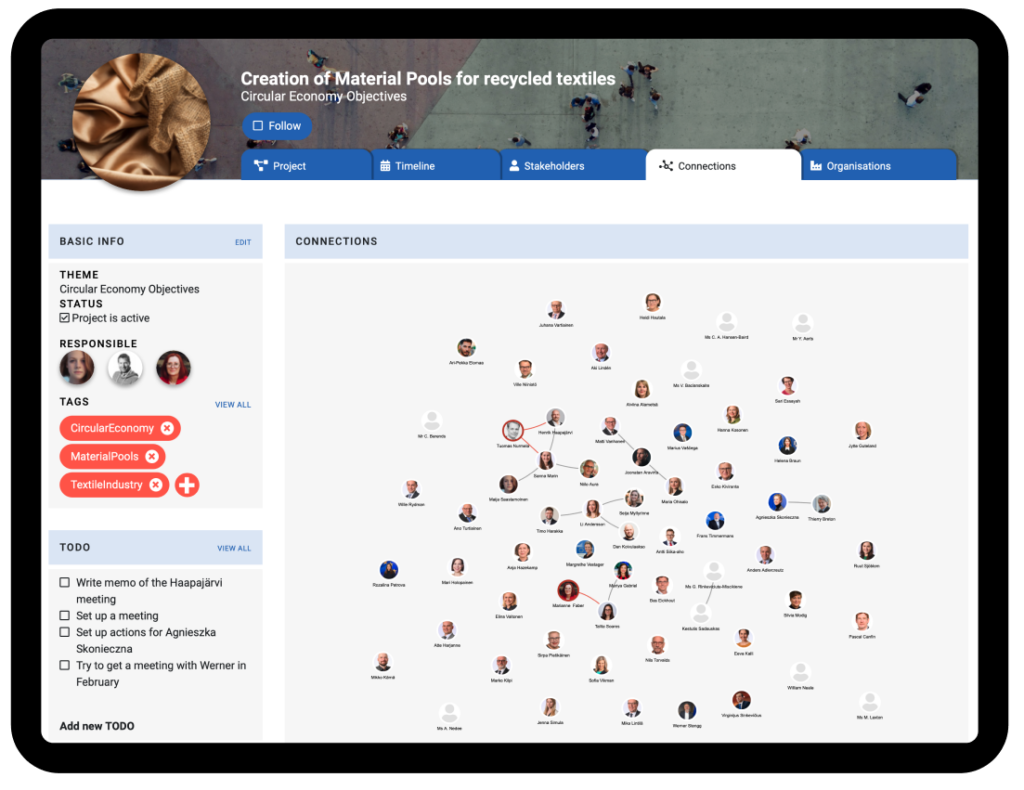
We recommend you add those stakeholders you have a good relationship with. Who are the people you can call any time to discuss a topic relevant to your organisation?
Add your connections to your profile page. Simply search the Lobster data for relevant stakeholders you know well. If their profile does not exist in Lobster’s data, you can also add them yourself.
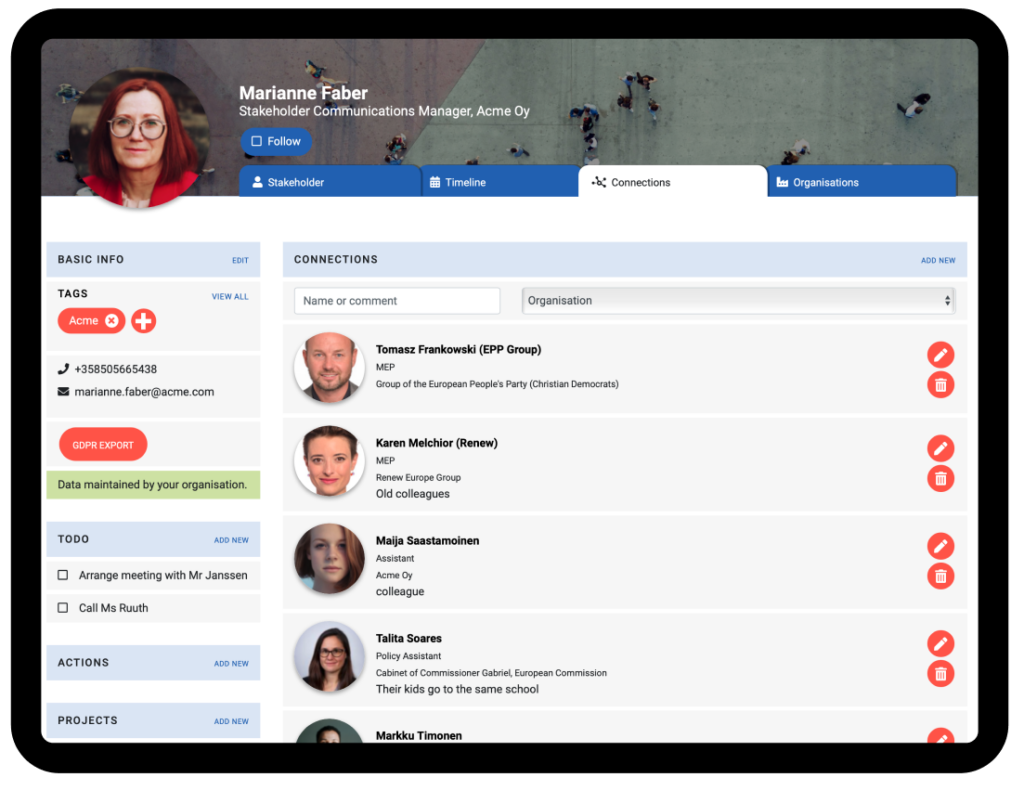
Find the themes and projects relevant to your work
Themes are broad, strategic lobbying goals with one or more projects connected to them. Projects are where most of the work happens. This is where you plan, coordinate and track the progress of your lobbying campaigns. All actions such as stakeholder meetings are reported as part of a project.
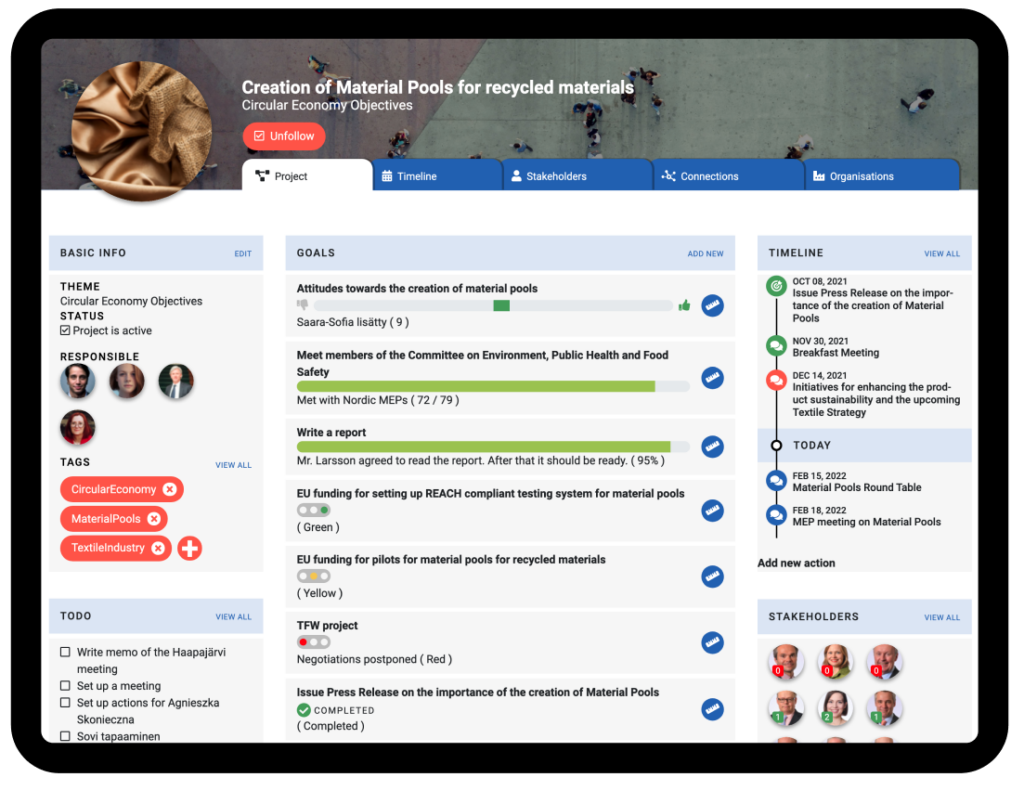
Follow the projects, themes and stakeholders profiles relevant to your work
All themes and projects listings can be found in the top menu. Look for the ones relevant to you and follow them.
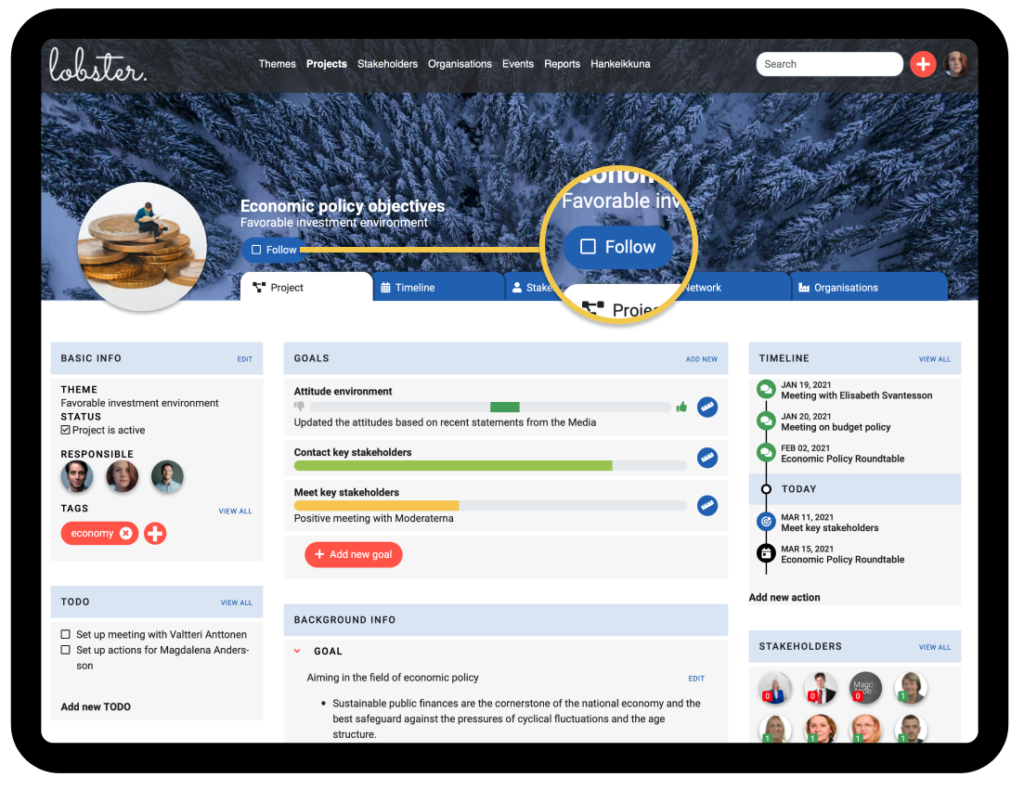
By following a project, a theme or even a stakeholder profile, you’ll be notified when there are updates to it.
Search
Lobster’s data contains several thousand stakeholders’ and their organisation’s key information. To find the information relevant to you, use the search on the top menu.
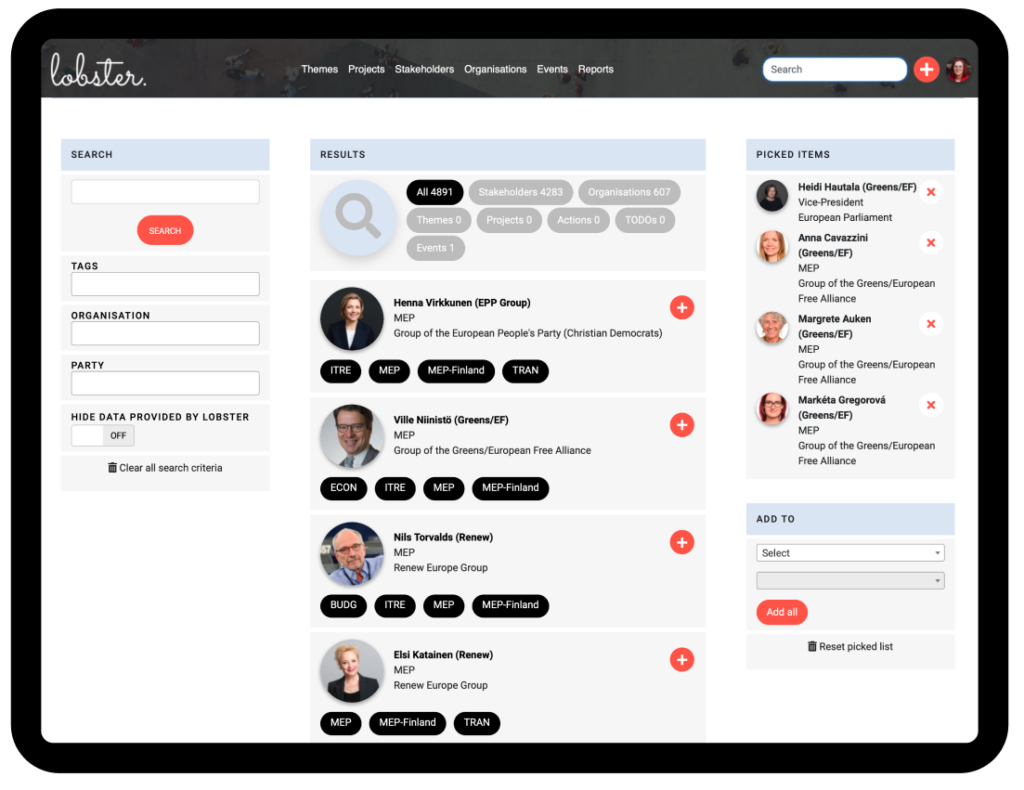
To access Lobster’s extended search with multiple filtering options, just click the search field on any page and press enter.
More on Lobster’s search options.
Set up monitoring for external data sources
Political information is in constant change, and it can be hard to keep up with without the proper tools. With Lobster’s automated monitoring, it is easier to keep an eye on any topics relevant to your work in a fast, simple and effective way.
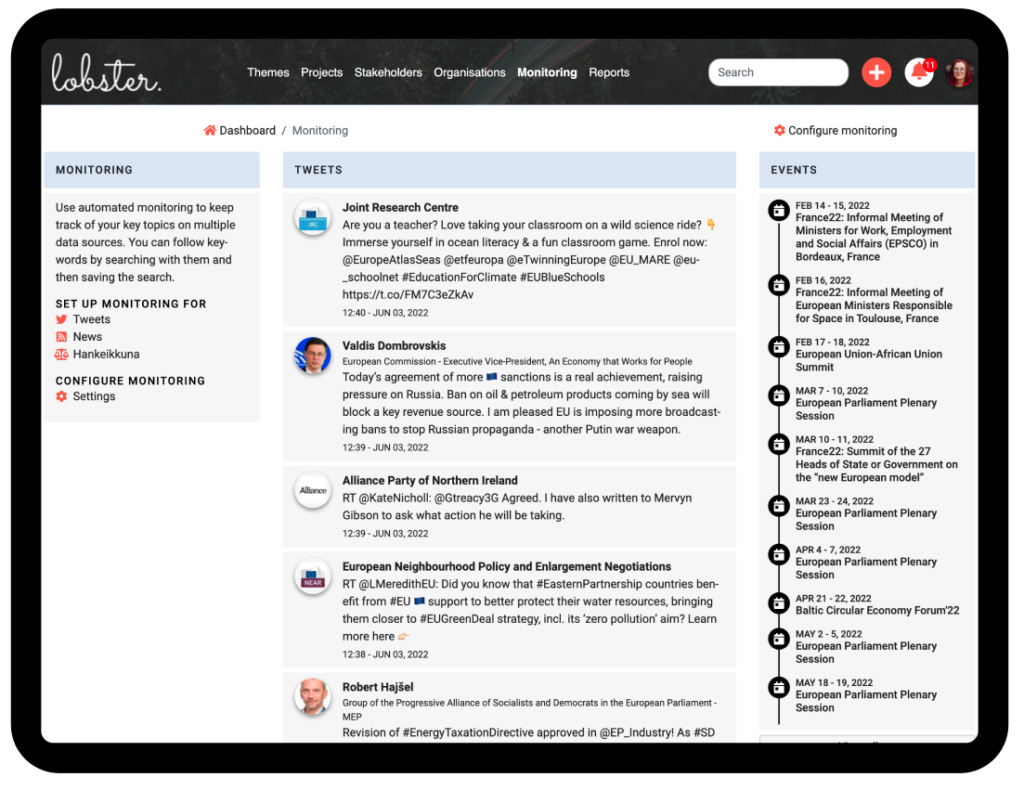
Lobster allows you to automatically monitor:
- Social media discussions in Twitter, get notified when people important to your cause talk about it
- Political newsfeeds, to catch the relevant news that don’t make it to headlines.
- Legislative processes, to stay up to date with any changes and updates (Hankeikkuna)
More on Lobster’s Monitoring Tools.
Finally, let’s add data to Lobster
You can do this anytime and anywhere in Lobster, just click the plus button on the top menu.
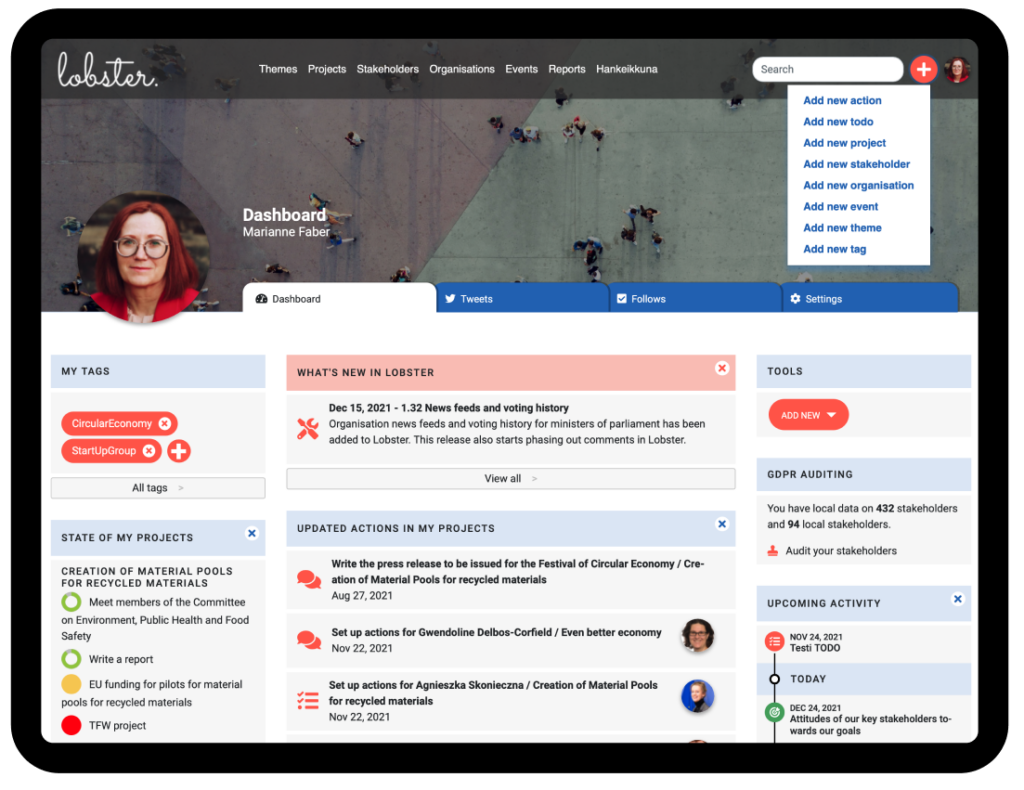
You can add:
- actions, such as stakeholder meetings
- new projects & themes, to organise your advocacy work
- new stakeholders and organisations, if they don’t exist in Lobsters data
- relevant events
- tags to organise information
That’s it. If you’d like a take a deeper dive into what Lobster can do for you, we recommend taking a look at our Getting Started -guide here.
And if you have any questions, feedback, or need support, just click the Feedback button on the bottom of any page in Lobster. We are happy to hear from you.
